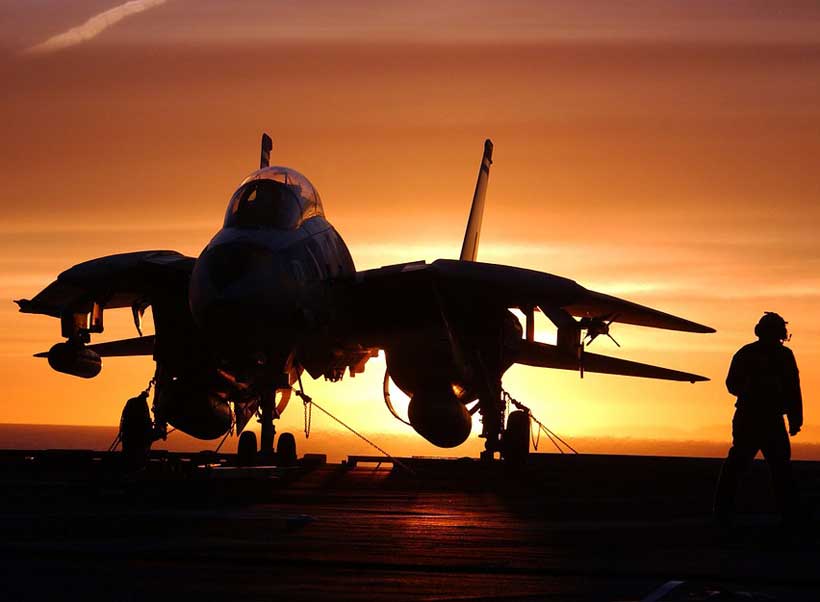In his famous farewell address to the American Public in 1961, President Dwight D. Eisenhower had both defined and warned against the encroaching influence of what was then termed as the US’s ‘Military-Industrial Complex. ’Speaking of the growing synergy between the US Military and the US’s fast rising defense and arms industry, President Eisenhower (himself a highly decorated former US General) had taken both time and considerable thought to highlight what he believed was a grave threat to the ideals of peace and prosperity for which the United States had stood for within the Post-War scenario. What’s more, he had said it right in the middle of the Cold War at a time when the US was engaged in an arms race for survival with the Soviet Union.
Six decades later, as one surmises the far-reaching impacts of the same Military Industrial Complex on the present day’s international politics, President Eisenhower’s warning seems more like the realization of a cryptic prophecy more than anything. In fact it has become increasingly difficult to find a parallel to the way the intersection of money and power affects global peace and prosperity, the way it is affected by the intersection of defense and foreign policy at the hands of the world’s arms industries.
This is best exemplified today by how lucrative arms contracts at the state level have increasingly come to take growing precedence over key foreign policy decisions, particularly by the world’s major powers. Thus, it is no secret that the world’s foremost arms importers enjoy considerably close ties with their suppliers. This is markedly apparent in the long history of close ties between the United States and Saudi Arabia which have increased manifold since the latter recently took over India as the World’s largest arms importer. The importance given to Saudi Arabia’s defense contracts in the US is such that the entire diplomatic fallout from the Jamal Khashoggi affair last year was presented as an unnecessary inconvenience by none other than President Trump himself.
The same bonhomie is also visible in the US’s growing defense and strategic ties with India. As the top importer of arms for the entire previous decade, India’s lucrative market for arms contracts is fuelled by its fast rising economy as well as its need to modernize its aging soviet-era platforms.
Whereas the bulk of India’s military hardware is sourced from Russian defense manufacturers, US defense contractors such as Lockheed Martin and Boeing have consistently eyed gaining a wider share of the Indian market. This includes the delivery of the first of 22 Apache attack helicopters and 15 Chinook helicopters made to the Indian Air force earlier this month. It also includes a similar deal that was recently signed between the United States and India to purchase 24 Sea Hawk helicopters to further expand the latter’s naval capabilities.
Yet, perhaps the most lucrative opportunity for US defense contractors coming out of India is the Indian Air Force’s latest tender for 114 fighter aircraft to replace its soviet era MiG squadrons. Worth around $18 billion, the Indian government’s requirements are based around developing an indigenous production base built on large-scale transfers of technology, training and maintenance operations. With the long-term goal of reducing its dependence on imports and developing its own local arms industry, India’s requirements thus extend beyond the mere procurement of platforms. Instead, they involve a unique opportunity for the world’s foremost arms manufacturers to gain a long-term foothold within the Indian market, while simultaneously investing in the country’s rapid economic growth.
These aspects are clearly evident in Lockheed Martin’s most recent sales pitch to India regarding the F-21 Fighter Aircraft. Offered as an exclusive India only upgrade of the widely used F-16fighter aircraft, the F-21 is being marketed as a highly viable solution to India’s modernization needs. With its production line planned on being based in India, Lockheed is aiming to build on last year’s announcement that it would be transferring the production of the F-16’s wings to its joint facilities in India by 2020.
If carried through, these developments are likely to have a serious impact on the trajectory of US-India relations for many decades to come. This in turn would also significantly affect both China’s and Russia’s approach to South Asia, particularly with respect to Pakistan. In fact much of the discourse on the development of Indo-US military ties is already based directly on the US’s strategic rivalry with China over the Indo-Pacific region. They very raison d’être for the Quadrilateral alliance, and the re-designation of the US Military’s Pacific Command to the ‘Indo-Pacific Command’ are all cases in point.
However, going back to President Eisenhower’s warning over the encroaching influence of the US’s Military-Industrial Complex, the above developments assume a slightly different context when viewed from the perspective of the US’s powerful defense lobby. That while the benefits of supplanting Russian defense contractors with US ones within India’s growing arms industry may not be stated as an explicit policy objective by the US State Department or the White House ;there are definitely many in Washington that would wholeheartedly welcome such a scenario.
From a purely realist perspective, many would consider the above developments simply as one of the many instances of real politik that characterize our world today. However, for the few idealists left amongst us, it is becoming increasingly difficult to assess whether the US’s major arms agreements are serving as a subordinate corollary to, or a key determining factor of its foreign policy choices. As a super-power that has long predicated its actions on the ideals of maintaining peace, freedom and stability, it is quite troubling to witness its foreign policy so increasingly and unabashedly driven by power, greed and profitability, especially in this day and age.


